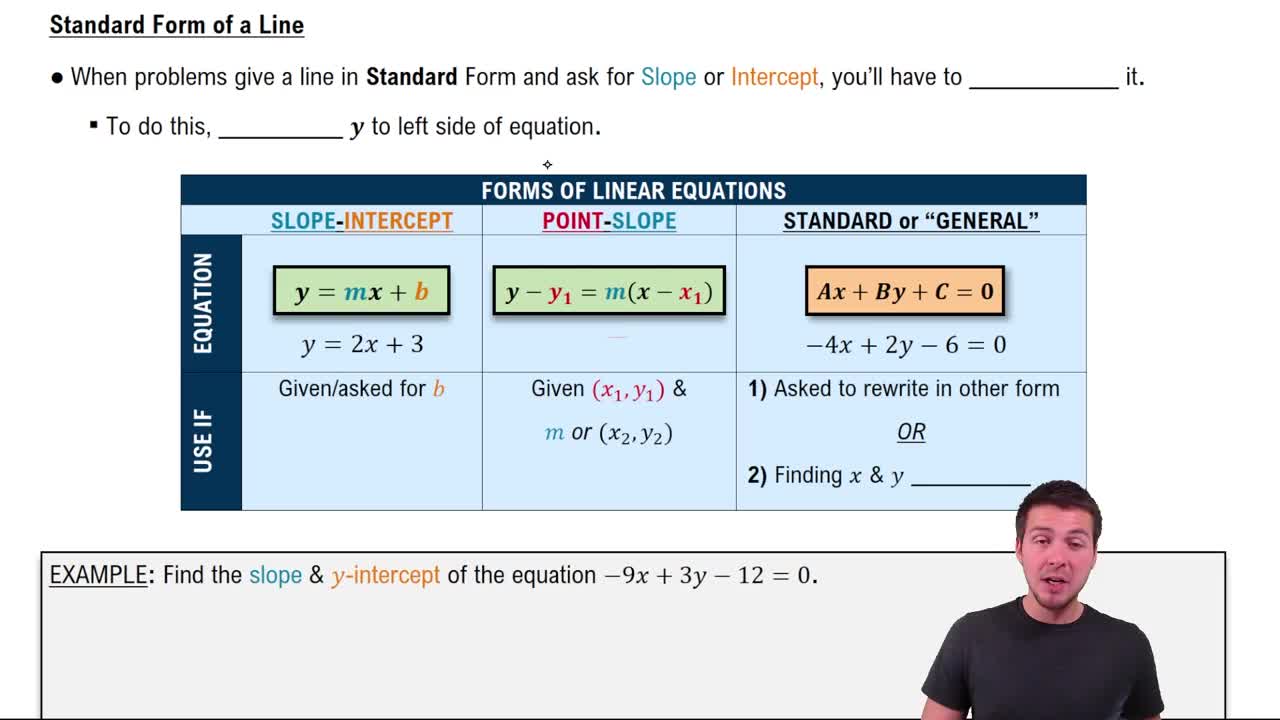Here are the essential concepts you must grasp in order to answer the question correctly.
Absolute Value Function
The absolute value function, denoted as y = |x - a|, represents the distance of x from a on the number line. It produces a V-shaped graph that opens upwards, with the vertex located at the point (a, 0). Understanding this function is crucial for analyzing its symmetry and behavior.
Recommended video:
Symmetry in Graphs
Symmetry in graphs refers to the property where a graph is identical on either side of a specific line, known as the line of symmetry. For functions like y = |x - a|, the line of symmetry is vertical and can be found at x = a, indicating that the function behaves the same for values equidistant from this line.
Recommended video:
Graphs and Coordinates - Example
Vertical Line Equation
A vertical line in the Cartesian plane is represented by an equation of the form x = k, where k is a constant. This line runs parallel to the y-axis and indicates that for any value of y, x remains constant. Identifying the correct value of k is essential for determining the line of symmetry for the given absolute value function.
Recommended video:
Standard Form of Line Equations
 Verified step by step guidance
Verified step by step guidance Verified video answer for a similar problem:
Verified video answer for a similar problem:



 5:57m
5:57m